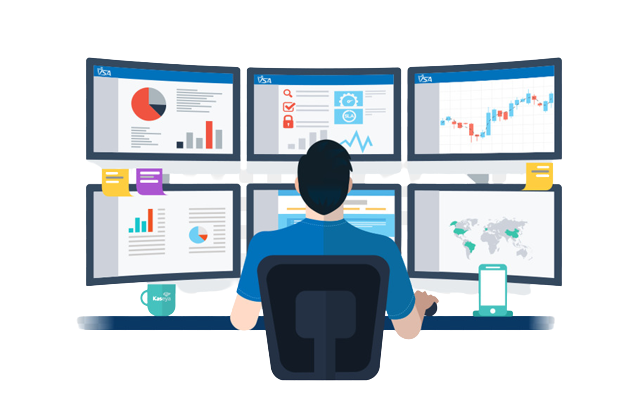We rarely ponder or discuss the operational drawbacks that traditional industries, manufacturing firms, or the energy sector’s infrastructure may have. The reasons that a company is unable to keep up with the increasing demand, facing high downtime maintenance, and experiencing asset failure at an alarming rate range from manual job handling to stacks of unused data.
Manufacturing, transportation, utilities, and building management are the industries that will benefit most from this technology. Is your company ready for this? How about your competitors?
Gartner thinks, “By 2025, 50% of industrial enterprises will use Industrial Internet of Things (IIoT) platforms & solutions to improve factory operations, up from 10% in 2020.” Emerging companies will have cutting-edge technology where industries can implement solutions from up to six vendors.
Based on primary research, the value of the Industry 4.0 market was estimated to be USD 84.59 Billion in 2020 and is expected to be worth USD 334.18 Billion by 2028, approximately, with a CAGR of 19.4%. By region, the Middle East is witnessing remarkable growth during the forecast period, with several initiatives led by UAE’s Ministry of Industry & Advanced Technology in terms of strategic partnerships and investments to scale the GDP.
Factories that have integrated OT and IIOT into their operations have been able to reduce costs, restructure strategies and offer fast track delivery of products and services in a seamless manner. There is much more potential in IIOT than most people realize. You might think implementation is too difficult, too time-consuming, too risky, too expensive or that you don’t have the expertise. But it’s easier than you think!
The purpose of this blog is to discuss some common misconceptions that business owners have about getting started on the road to success.
By using artificial intelligence, machine learning, machine-to-machine communication, cyber-immune systems, cloud computing, digital twins, and the internet of things, this transformation integrates information technology and operational processes, digitizes products, services, business models, and customer access. This involves cognitive optimization of any process that impacts production environments, maintenance strategies, and provides collective access to big data through IOT sensors and platforms.
Through OT & IIOT technologies, companies can improve decentralized decision making, reduce carbon footprint, foster sustainability, and improve maintenance and condition monitoring.

- You don’t need to buy new equipment in order to adapt OT and IIOT. The legacy brownfield hardware must be in good condition and the platform must access the data through sensors or edge controllers. When this connectivity is active, you will know exactly when the assets can fail, thereby reducing maintenance downtime.
- Undoubtedly, legacy hardware and traditional infrastructure have always been at the risk of cyberthreats. Server burnouts and data loss associatedwith it is the predominant risk that every company owner faces. However, when all the hardware, ERPs, and storage are hosted over a highly encrypted cloud and integrated with an IIOT platform with audited firmware upgrades, it makes it extremely secure & also helps in a speedy recovery while keeping an eye out for possible vulnerabilities.
- The global market has seen a spike in emerging IIOT tech and with that solution deployment has become seamless and easy. There are advisors and consultants in the market who can assist in choosing the right product by analyzing the state of your current facility. These systems are custom-made and built in a way that people with the most basic skills can handle their operations – not just IT professionals of highly skilled programmers or developers. With proper training and practice, an existing team with 1-2 professionals can handle the platform and manage its operations easily.
- You don’t need to be a 100% cloud based or a 100% local for your IIOT system to be up and running. A hybrid data transmission model can be worked out where data aggregation can happen locally and then can be sent to cloud for computing purposes, which controls the latency and balances the volume of data being transmitted. Local edge processing can safeguard data leakage with optimum data realization.
- With predictive machine learning and artificial intelligence models, it doesn’t take long for a solution to be up and running. An MVP can be created in less than a month’s time and the results can be seen in less than 90-120 days. The platform can start analysing data and take initial measures to start value addition while another use case is built for operational improvement.
Want to learn more?
Get in touch with us now. With our expertise and experience, we can help you transform your business!
